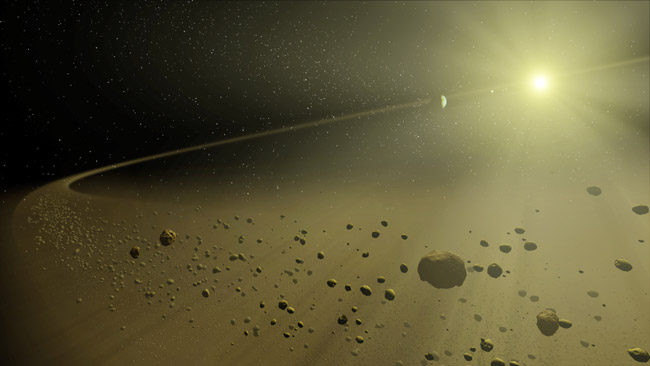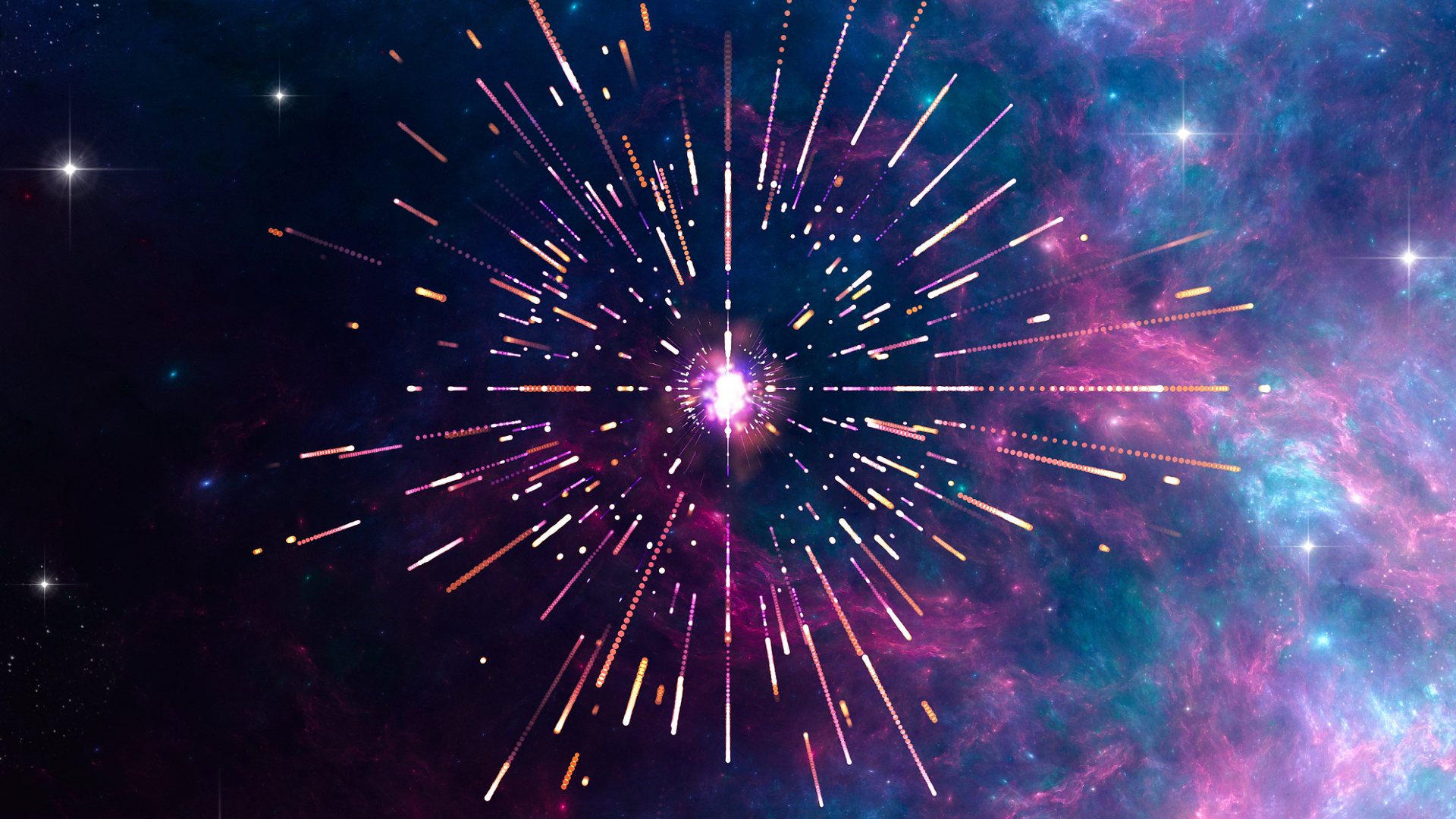Missing Link Spotted in Planet Formation

For several years scientists have been detecting planets around mature stars and, separately, imaging dust disks around younger stars. A strong theory has developed that planets form from these disks of material that are leftovers of the star formation process.
In other investigations, lumpy objects in young star systems have been seen, and researchers figure they're planets-in-the-making.
However there has been a glaring gap in the observations: Mature stars harboring both planets and disks have remained elusive, perhaps simply because the disks have thinned out to almost imperceptible levels.
New observations announced today begin to fill in the missing link.
NASA's Spitzer Space Telescope has detected dust disks around mature, Sun-like stars known to have planets. The dust is in the outlying reaches of each system and is presumed to result from collisions between objects, as occurs in our own solar system's Kuiper Belt, out beyond Neptune.
The half-dozen systems Spitzer analyzed contain gas giant planets. Rocky, Earth-sized planets might exist in them, but technology cannot find them now.
The findings suggest theories of planet formation, including here in our solar system, are on track. It goes like this: A star is born amid a cloud of gas and dust. Leftovers swirl into a relatively flat disk that orbits the rotating star. Dust and chemicals collects and build rocky and icy objects, which collide. Some stick to make comets, asteroids and planets. Other collisions later on continue to produce dust -- which Spitzer detected.
Breaking space news, the latest updates on rocket launches, skywatching events and more!
The new results "fit into theoretical picture that we've built up about how stars and planetary system form," said Charles Beichman of NASA's Jet Propulsion Laboratory and lead author of the study.
"Spitzer has established the first direct link between planets and disks," Beichman said. "Now, we can study the relationship between the two."
Separate new observations by the Hubble Space Telescope reveal significant dust disks around a young star, one between 50 million and 250 million years old. Importantly, the star is similar to our Sun.
"The new Hubble image gives us the best look so far at reflected light from a disc around a star the mass of the Sun," said Hubble study leader David Ardila of the Johns Hopkins University. "Basically, it shows one of the possible pasts of our own solar system."
Both results were presented Thursday afternoon in a NASA teleconference with reporters.
Alycia Weinberger, an astronomer at the Carnegie Institution of Washington, suggests the dust around a star is like bricks at a construction site. Previous observations had revealed the bricks, she said, and other observations had shown the completed houses, but the two hadn't been found at the same site.
The new observations close the loop. They show us both the planets and the disks," said Weinberger, who was not involved in the work.

Rob has been producing internet content since the mid-1990s. He was a writer, editor and Director of Site Operations at Space.com starting in 1999. He served as Managing Editor of LiveScience since its launch in 2004. He then oversaw news operations for the Space.com's then-parent company TechMediaNetwork's growing suite of technology, science and business news sites. Prior to joining the company, Rob was an editor at The Star-Ledger in New Jersey. He has a journalism degree from Humboldt State University in California, is an author and also writes for Medium.
